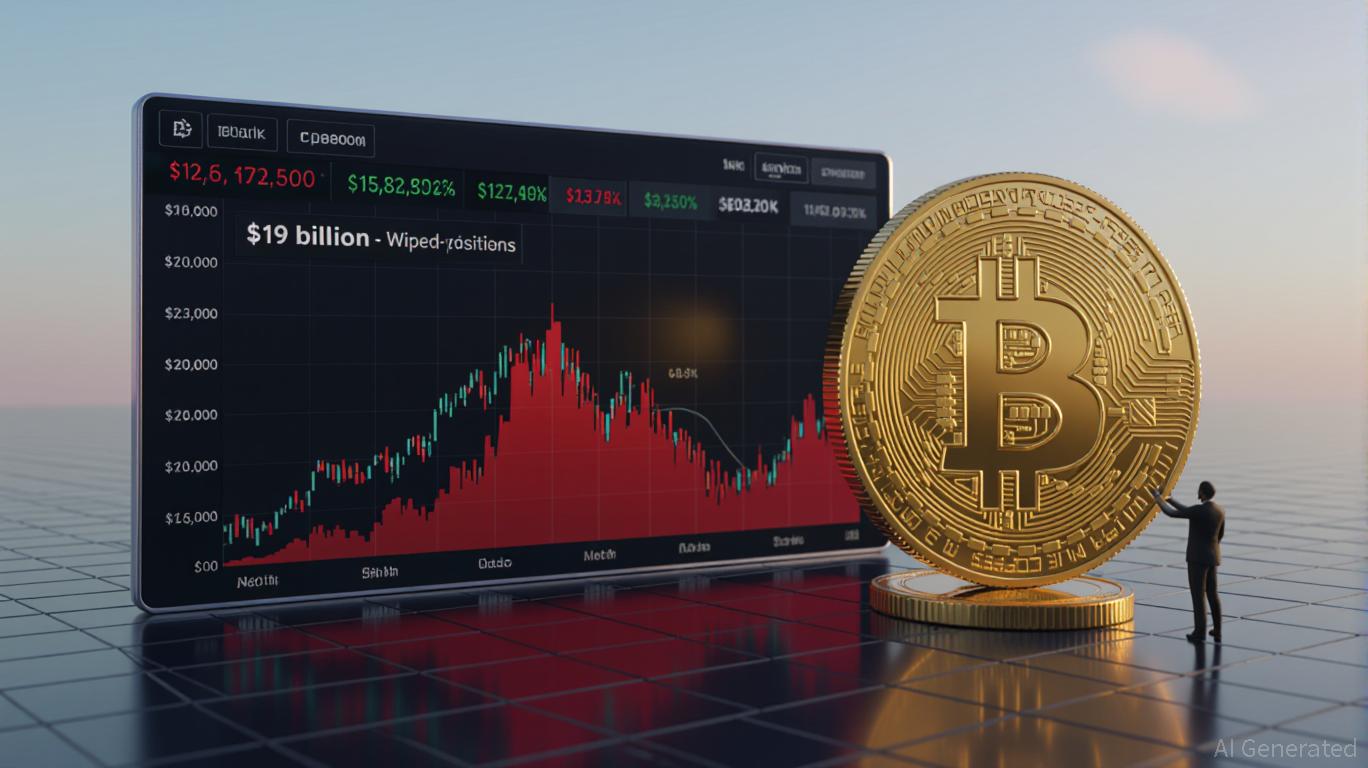Ethereum Latest Updates: Buterin's Railgun Transaction Ignites Privacy and Pre-Sale Discussion as ETH Reaches $3,000
- Vitalik Buterin transferred $2.9M ETH to privacy protocol Railgun as Ethereum surged past $3,000, triggering speculation about liquidity events. - On-chain analysts highlight Railgun deposits' historical link to pre-sale activity, though Buterin's 0.4% stake transfer doesn't inherently signal selling. - Buterin's $738.6M ETH holdings and recent privacy advocacy, including his "privacy is hygiene" stance, frame the transaction's strategic context. - Market reactions remain divided between regulatory hedgi
On November 26, 2025, Ethereum (ETH) broke above $3,000 after Vitalik Buterin moved $2.9 million worth of
Railgun is a zero-knowledge protocol that conceals transaction information, drawing interest from users who prioritize privacy for their asset transfers. While Buterin’s deposit does not necessarily indicate an imminent sale, the protocol’s reputation for being used ahead of sales has heightened market alertness. Blockchain data shows Buterin controls 240,002 ETH in his main wallet—worth about $727 million—along with smaller holdings in AETHWETH and WHITE tokens

This transfer took place as Buterin renewed his calls for privacy in blockchain networks. Earlier in November, he stated that “privacy is hygiene,” not just a feature, in response to a data leak involving major banks such as JPMorgan and Citi
The community remains split over the significance of this transfer. Some experts interpret it as a strategic move to counter regulatory risks or to test privacy features. Others point to Buterin’s history of making large donations—such as his 2021
Interest in privacy within the Ethereum ecosystem is growing, fueled by both technological progress and regulatory developments. Recent moves like Grayscale’s Zcash trust application and Binance’s Ontology network upgrade point to a rising appetite for privacy-focused assets. Nevertheless, Buterin’s warnings about institutional involvement highlight the ongoing debate between scalability and decentralization as Ethereum adapts to a changing financial environment
Disclaimer: The content of this article solely reflects the author's opinion and does not represent the platform in any capacity. This article is not intended to serve as a reference for making investment decisions.
You may also like
Bolivia eyes crypto and stablecoins to fight inflation and US dollar shortage

COTI and Houdini Swap Integrate Privacy and Regulatory Compliance to Support Institutional Blockchain Integration
- COTI partners with Houdini Swap to enable confidential cross-chain swaps, preserving user privacy while maintaining regulatory compliance for institutional adoption. - The integration uses non-custodial architecture and split-transaction routing to obscure sender-receiver links while allowing KYT checks on regulated exchanges. - COTI's Garbled Circuits infrastructure supports enterprise-grade privacy, enabling full lifecycle compliance from asset swaps to DeFi interactions without data exposure. - With $

XRP News Update: XRP ETF Momentum and Institutional Interest Face Off Against Technical Challenges in $15.5 Trillion Pursuit
- XRP gains traction via spot ETF approvals and institutional adoption, unlocking a $15.5T market potential as Ripple expands into prime brokerage and cross-border payments. - SEC-approved ETFs from Bitwise, 21Shares, and Grayscale attract $645M in AUM, offering investors regulated access to XRP with fees ranging from 0.34% to 1.89%. - Ripple's $1.25B acquisition of Hidden Road (Ripple Prime) enhances XRP's utility as collateral for $3T in annual settlements, boosting institutional liquidity and adoption.
Bitcoin Leverage Liquidations: Potential Impact on Institutional Involvement in 2025
- 2025 crypto market saw $19B in Bitcoin liquidations after October 10 crash, slashing prices from $126k to $82k amid 70% long-position collapses. - 1,001:1 leverage ratios and 78% perpetual futures dominance created self-reinforcing sell-offs, exposing systemic risks in hyper-leveraged derivatives. - Fed rate hikes and the GENIUS Act's stablecoin rules intensified volatility, forcing institutions to adopt AIFM risk models and RWA diversification. - Post-crisis reforms show $73.59B in crypto-collateralized
